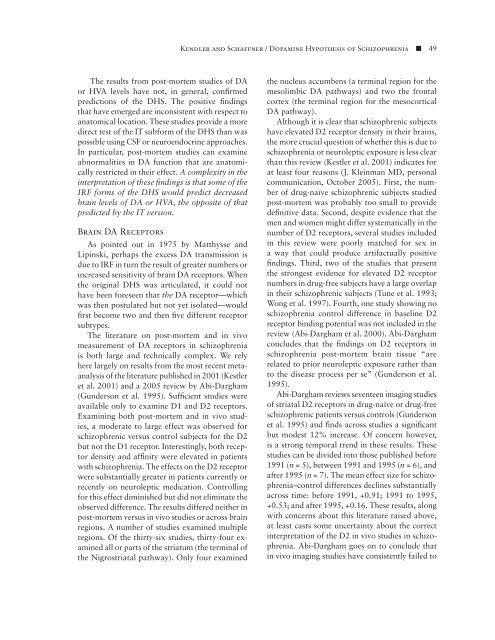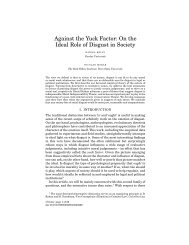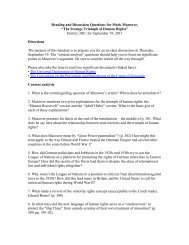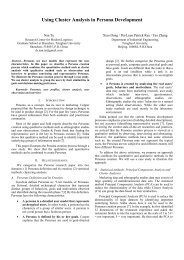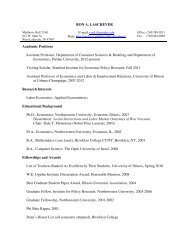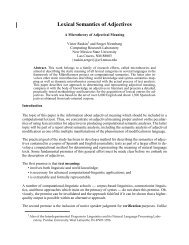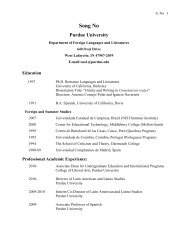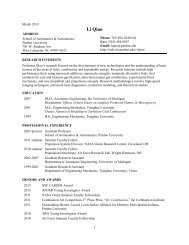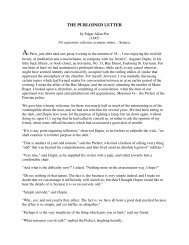The Dopamine Hypothesis of Schizophrenia: An Historical and ...
The Dopamine Hypothesis of Schizophrenia: An Historical and ...
The Dopamine Hypothesis of Schizophrenia: An Historical and ...
Create successful ePaper yourself
Turn your PDF publications into a flip-book with our unique Google optimized e-Paper software.
Kendler <strong>and</strong> Schaffner / <strong>Dopamine</strong> <strong>Hypothesis</strong> <strong>of</strong> <strong>Schizophrenia</strong> ■ 49<br />
<strong>The</strong> results from post-mortem studies <strong>of</strong> DA<br />
or HVA levels have not, in general, confirmed<br />
predictions <strong>of</strong> the DHS. <strong>The</strong> positive findings<br />
that have emerged are inconsistent with respect to<br />
anatomical location. <strong>The</strong>se studies provide a more<br />
direct test <strong>of</strong> the IT subform <strong>of</strong> the DHS than was<br />
possible using CSF or neuroendocrine approaches.<br />
In particular, post-mortem studies can examine<br />
abnormalities in DA function that are anatomically<br />
restricted in their effect. A complexity in the<br />
interpretation <strong>of</strong> these findings is that some <strong>of</strong> the<br />
IRF forms <strong>of</strong> the DHS would predict decreased<br />
brain levels <strong>of</strong> DA or HVA, the opposite <strong>of</strong> that<br />
predicted by the IT version.<br />
Brain DA Receptors<br />
As pointed out in 1975 by Matthysse <strong>and</strong><br />
Lipinski, perhaps the excess DA transmission is<br />
due to IRF in turn the result <strong>of</strong> greater numbers or<br />
increased sensitivity <strong>of</strong> brain DA receptors. When<br />
the original DHS was articulated, it could not<br />
have been foreseen that the DA receptor—which<br />
was then postulated but not yet isolated—would<br />
first become two <strong>and</strong> then five different receptor<br />
subtypes.<br />
<strong>The</strong> literature on post-mortem <strong>and</strong> in vivo<br />
measurement <strong>of</strong> DA receptors in schizophrenia<br />
is both large <strong>and</strong> technically complex. We rely<br />
here largely on results from the most recent metaanalysis<br />
<strong>of</strong> the literature published in 2001 (Kestler<br />
et al. 2001) <strong>and</strong> a 2005 review by Abi-Dargham<br />
(Gunderson et al. 1995). Sufficient studies were<br />
available only to examine D1 <strong>and</strong> D2 receptors.<br />
Examining both post-mortem <strong>and</strong> in vivo studies,<br />
a moderate to large effect was observed for<br />
schizophrenic versus control subjects for the D2<br />
but not the D1 receptor. Interestingly, both receptor<br />
density <strong>and</strong> affinity were elevated in patients<br />
with schizophrenia. <strong>The</strong> effects on the D2 receptor<br />
were substantially greater in patients currently or<br />
recently on neuroleptic medication. Controlling<br />
for this effect diminished but did not eliminate the<br />
observed difference. <strong>The</strong> results differed neither in<br />
post-mortem versus in vivo studies or across brain<br />
regions. A number <strong>of</strong> studies examined multiple<br />
regions. Of the thirty-six studies, thirty-four examined<br />
all or parts <strong>of</strong> the striatum (the terminal <strong>of</strong><br />
the Nigrostriatal pathway). Only four examined<br />
the nucleus accumbens (a terminal region for the<br />
mesolimbic DA pathways) <strong>and</strong> two the frontal<br />
cortex (the terminal region for the mesocortical<br />
DA pathway).<br />
Although it is clear that schizophrenic subjects<br />
have elevated D2 receptor density in their brains,<br />
the more crucial question <strong>of</strong> whether this is due to<br />
schizophrenia or neuroleptic exposure is less clear<br />
than this review (Kestler et al. 2001) indicates for<br />
at least four reasons (J. Kleinman MD, personal<br />
communication, October 2005). First, the number<br />
<strong>of</strong> drug-naïve schizophrenic subjects studied<br />
post-mortem was probably too small to provide<br />
definitive data. Second, despite evidence that the<br />
men <strong>and</strong> women might differ systematically in the<br />
number <strong>of</strong> D2 receptors, several studies included<br />
in this review were poorly matched for sex in<br />
a way that could produce artifactually positive<br />
findings. Third, two <strong>of</strong> the studies that present<br />
the strongest evidence for elevated D2 receptor<br />
numbers in drug-free subjects have a large overlap<br />
in their schizophrenic subjects (Tune et al. 1993;<br />
Wong et al. 1997). Fourth, one study showing no<br />
schizophrenia control difference in baseline D2<br />
receptor binding potential was not included in the<br />
review (Abi-Dargham et al. 2000). Abi-Dargham<br />
concludes that the findings on D2 receptors in<br />
schizophrenia post-mortem brain tissue “are<br />
related to prior neuroleptic exposure rather than<br />
to the disease process per se” (Gunderson et al.<br />
1995).<br />
Abi-Dargham reviews seventeen imaging studies<br />
<strong>of</strong> striatal D2 receptors in drug-naïve or drug-free<br />
schizophrenic patients versus controls (Gunderson<br />
et al. 1995) <strong>and</strong> finds across studies a significant<br />
but modest 12% increase. Of concern however,<br />
is a strong temporal trend in these results. <strong>The</strong>se<br />
studies can be divided into those published before<br />
1991 (n = 5), between 1991 <strong>and</strong> 1995 (n = 6), <strong>and</strong><br />
after 1995 (n = 7). <strong>The</strong> mean effect size for schizophrenia–control<br />
differences declines substantially<br />
across time: before 1991, +0.91; 1991 to 1995,<br />
+0.53; <strong>and</strong> after 1995, +0.16. <strong>The</strong>se results, along<br />
with concerns about this literature raised above,<br />
at least casts some uncertainty about the correct<br />
interpretation <strong>of</strong> the D2 in vivo studies in schizophrenia.<br />
Abi-Dargham goes on to conclude that<br />
in vivo imaging studies have consistently failed to


